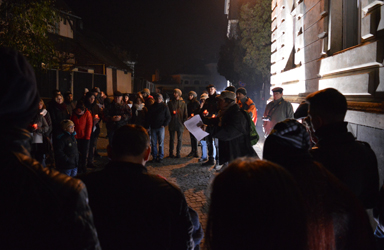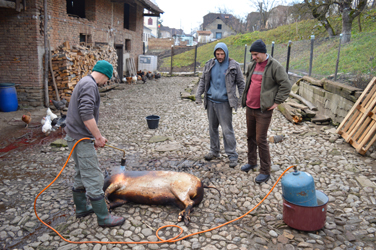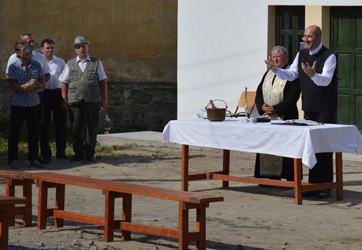Fieldwork in Romania


 From the end of 2014 and throughout 2015 I undertook fieldwork in southern Transylvania, Romania. During this time I lived in a village in the “Siebenburgen” area, a region historically populated by ethnic Germans known as Saxons. Following the revolution that overthrew the Romanian Communist Party government in 1989, the majority of the Saxons emigrated to Germany. The remaining residents—Saxons, Romanians, Roma and some Hungarians—have had to contend with the dynamics of this depopulation alongside the harsh economic situation of post-socialist Romania.
From the end of 2014 and throughout 2015 I undertook fieldwork in southern Transylvania, Romania. During this time I lived in a village in the “Siebenburgen” area, a region historically populated by ethnic Germans known as Saxons. Following the revolution that overthrew the Romanian Communist Party government in 1989, the majority of the Saxons emigrated to Germany. The remaining residents—Saxons, Romanians, Roma and some Hungarians—have had to contend with the dynamics of this depopulation alongside the harsh economic situation of post-socialist Romania.
For my research, I focused on the development of tourism and an emergent rural middle class. Extensive work by local and foreign NGOs to conserve the traditional Saxon built environment and the diverse ecology resulting from small-scale domestic agriculture has also fostered a strong interest among tourists from Europe, Asia, and even further afield. I looked at the organisation of tourism work and how this fits with changing labour in the villages, as well as the economics, politics and bureaucracy of EU funding and development initiatives.
From top right:
In October 2015 the Colectiv nightclub in Bucharest burned down, killing over sixty people. This sparked a wave of angry protest throughout the whole country against the corruption and bureaucratic corner-cutting that had allowed the tragedy to happen, protest that ultimately led to the resignation of the government led by Victor Ponta. Here, citizens in a small Transylvanian town gather to pay their respects to the dead, many holding the red candles that are ubiquitous at sites of mourning, and to discuss grievances directed against the town hall (behind the group). White sheets printed with a list of proposed demands were handed around the group for debate. A group of us had come from one of the outlying villages, but hung off to one side as we had less relation to the specific dynamics of the town.
“Cutting” the pig before Christmas. A litter of piglets have been raised over the course of the year by a village “gospodar” (household farmer), who invests much pride in his work. His family will keep one, while the others are bought by relatives living in town. The butchery is done in the village, in this case by a trained butcher who currently works as the watchman for a hunting association. He is offered meat, but usually has enough already. The preparation of the meat is a communal affair, producing sausages, preserved fat and other delicacies for the coming year.
The inauguration of a new craft centre. The Evangelical Lutheran priest reads a blessing invoking the importance of work and prayer. To his right, the Romanian Orthodox priest waits to bless the building with a sprig of basil in holy water. Under the burning August sun, the crowd had pressed back into the shade on the far side of the road. The centre is a public-private endeavour—the first of its kind in the area— sited in a renovated village fire station. Young potters trained in the UK hope to revive a distinctive style of cobalt-blue Saxon pottery.
